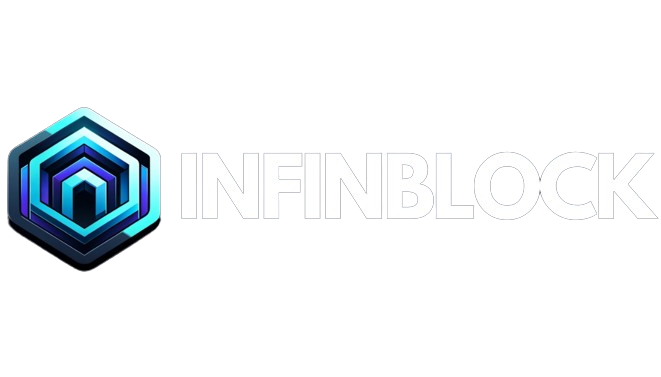The realm of blockchain technology is vast and complex, encompassing various types of blockchains that cater to different needs and use cases. At its core, blockchain is a distributed ledger technology that enables secure and transparent transactions. But not all blockchains are created equal. Let’s delve into the main types of blockchains: Public, Private, Consortium, and Hybrid, unraveling their unique features, challenges, and popular examples.
Public Blockchains:
Public blockchains stand as the epitome of blockchain technology, embodying the principles of decentralization, transparency, and security. They serve as open ledgers, where anyone with an internet connection can participate without needing permission. This inclusive nature makes public blockchains a powerful tool for creating trustless systems, where transactions and data are verifiable by all.
Key Characteristics of Public Blockchains
- Decentralization: Public blockchains operate without a central governing body. The consensus on transactions and the validity of data is achieved through distributed consensus mechanisms such as Proof of Work (PoW) or Proof of Stake (PoS).
- Transparency: Every transaction on a public blockchain is visible to anyone who chooses to view them. This transparency ensures that activities on the ledger are open for verification, enhancing trust among participants.
- Immutability: Once data is recorded on a public blockchain, altering it is practically impossible. This immutability is safeguarded by the network’s decentralized nature, where changing data on one node would require simultaneous changes on the majority of other nodes, a feat nearly impossible to achieve due to the high level of computational power needed.
- Security: Public blockchains leverage cryptographic techniques to secure data, making transactions secure and tamper-resistant. The decentralized consensus mechanisms also protect the network from fraudulent activities and attacks.
Challenges and Considerations
- Scalability: One of the most significant challenges facing public blockchains is scalability. As the network grows, the limitations of transaction processing capacity become apparent. Networks like Bitcoin and Ethereum have faced issues like high transaction fees and slower transaction times during periods of congestion.
- Energy Consumption: The PoW consensus mechanism, used by networks like Bitcoin, requires substantial computational power, leading to concerns over energy consumption and environmental impact.
- Privacy: While transaction data is secure and anonymous to a degree, the transparency of public blockchains means that transaction history and balances associated with public addresses are openly accessible, which might not be desirable for all users or use cases.
Popular Public Blockchains
- Bitcoin: The first and most well-known public blockchain, designed primarily for peer-to-peer transactions without the need for a trusted third party.
- Ethereum: Beyond supporting cryptocurrencies, Ethereum introduced smart contracts, enabling the development of decentralized applications (dApps) on its platform.
- Litecoin, Cardano, and Solana: Other examples of public blockchains, each with unique features aiming to address some of the challenges faced by earlier blockchains, such as scalability and transaction speed.
Private Blockchains:
Private blockchains, also known as permissioned blockchains, operate under restricted access, distinguishing them fundamentally from their public counterparts. Unlike public blockchains that allow anyone to participate in validating transactions, running nodes, or contributing to the development of the network, private blockchains place restrictions on who is allowed to engage in network activities.
Key Characteristics of Private Blockchains:
- Controlled Network Access: Participation in a private blockchain is by invitation only, managed by the network’s central authority or consortium. This selective access can ensure that only entities meeting specific criteria can join the network.
- Enhanced Privacy: Because access to the blockchain is limited, transactions and data can be kept confidential among network participants. This is particularly beneficial for businesses that need to protect sensitive data.
- Higher Efficiency: With fewer nodes to validate transactions, private blockchains can often process transactions faster than public blockchains. This can significantly improve scalability and efficiency, making them suitable for enterprise applications.
- Regulatory Compliance: By controlling network access, private blockchains can be tailored to comply with industry regulations, making them an attractive option for industries with strict regulatory requirements.
Use Cases
Private blockchains are ideal for specific applications where privacy, speed, and regulatory compliance are paramount. Typical use cases include:
- Supply Chain Management: Companies can use private blockchains to track the production, shipment, and delivery of products in a secure, tamper-proof manner.
- Healthcare: Patient records can be securely stored and shared among authorized healthcare providers to improve treatment outcomes while complying with privacy laws.
- Financial Services: Banks and financial institutions can leverage private blockchains for secure and efficient transaction processing, clearing, and settlement.
Popular Private Blockchain Platforms
Several blockchain platforms cater specifically to private or permissioned blockchain applications. Notable examples include:
- Hyperledger Fabric: Hosted by the Linux Foundation, Hyperledger Fabric is designed for developing applications or solutions with a modular architecture. It’s known for its flexibility, security features, and ability to support various industries.
- R3 Corda: Corda is tailored for the financial industry, enabling businesses to transact directly and privately using smart contracts, reducing transaction and record-keeping costs, and streamlining business operations.
- Quorum: Based on Ethereum, Quorum is an open-source blockchain platform that combines Ethereum’s powerful functionality with enhancements to support enterprise needs for privacy and performance.
Challenges
Despite their advantages, private blockchains face criticism for their centralized nature, which some argue goes against the original ethos of blockchain technology—decentralization. Furthermore, the security of a private blockchain depends heavily on the trustworthiness of the governing entities and the robustness of the network’s infrastructure.
Consortium Blockchains:
Consortium blockchains, also known as federated blockchains, represent a middle ground between the fully decentralized nature of public blockchains and the single-entity control of private blockchains. In these systems, control over the blockchain is shared among a pre-selected set of nodes—a consortium—rather than being open to anyone or held by a single organization.
Key Features
- Shared Governance: Unlike a private blockchain that is controlled by one organization, a consortium blockchain’s governance is distributed among a group of companies or institutions. This setup helps decentralize the network more than a private blockchain but less than a public one.
- Efficiency and Scalability: With fewer nodes participating in the consensus process compared to public blockchains, consortium blockchains can offer faster transaction times and better scalability.
- Privacy with Transparency: Consortium blockchains can be designed to restrict access to certain data while still providing a level of transparency among the consortium members.
- Regulatory Compliance: They can be more easily tailored to comply with specific industry regulations since the consortium can agree on compliance standards.
Common Use Cases
- Banking and Finance: Financial institutions can use consortium blockchains for cross-border payments, clearing, and settlement systems, ensuring security and efficiency while maintaining necessary privacy standards.
- Supply Chain Management: Companies across a supply chain can share data securely, from manufacturing to delivery, ensuring authenticity and reducing counterfeits.
- Healthcare Data Sharing: Hospitals, research institutions, and insurers can share patient data securely and with patient consent, improving care coordination and medical research.
Popular Examples
- R3’s Corda: Designed for the financial industry, it enables businesses to transact directly with smart contracts, reducing transaction costs and streamlining operations.
- Hyperledger Fabric: Hosted by the Linux Foundation, it supports various industries with its modular and configurable architecture, making it suitable for consortiums that require specific blockchain functionalities.
Challenges
- Governance Complexity: Establishing a governance model that satisfies all consortium members can be challenging, as it requires clear agreements on how the blockchain operates, updates, and resolves disputes.
- Collaboration Barriers: Effective collaboration among competing entities in a consortium can be difficult, potentially slowing down decision-making processes.
Hybrid Blockchains:
Hybrid blockchains embody the fusion of public and private blockchains, offering a tailored solution that captures the best features of both worlds. This type of blockchain provides a versatile framework that caters to businesses and organizations looking for a middle ground between the openness of public blockchains and the privacy of private blockchains.
Characteristics of Hybrid Blockchains
- Selective Transparency: Hybrid blockchains allow for transactions to be kept private within a closed network while also enabling certain information to be made public. This selective transparency offers businesses the discretion they need without sacrificing the benefits of blockchain transparency.
- Controlled Access with Decentralization: While access to a hybrid blockchain is controlled and can be restricted, the network maintains a level of decentralization. Decisions and control over the blockchain can be distributed among pre-selected nodes or entities, which helps prevent single points of failure and enhances security.
- Customizable Network Rules: The governance and operational rules of a hybrid blockchain can be customized according to the needs of its participants. This includes the ability to change consensus mechanisms or data visibility settings as required.
Advantages of Hybrid Blockchains
- Enhanced Security: Combining the security aspects of both public and private blockchains, hybrid blockchains ensure that sensitive data is protected while still benefiting from the robust security mechanisms of blockchain technology.
- Efficient Transactions: By limiting the nodes that participate in the consensus process, hybrid blockchains can offer faster transaction speeds and lower costs compared to public blockchains.
- Flexibility and Scalability: The ability to choose which data to make public and which to keep private provides organizations with the flexibility to scale their blockchain solutions as needed while ensuring compliance with regulatory requirements.
Use Cases
- Supply Chain Management: Hybrid blockchains can significantly improve supply chain transparency and efficiency while keeping sensitive commercial data confidential.
- Healthcare Data Sharing: Patient records can be securely shared among authorized healthcare providers without exposing personal information publicly.
- Cross-Industry Collaboration: Businesses across different sectors can collaborate on a hybrid blockchain platform, sharing necessary data transparently while maintaining the confidentiality of proprietary information.
- Financial Services: Financial institutions can leverage hybrid blockchains for secure and efficient transaction processing, auditing, and compliance purposes.
Prominent Examples
- IBM Food Trust: Utilizing hybrid blockchain technology to enhance transparency and accountability in the food supply chain, from farm to fork.
- Ripple (XRP): While often debated if Ripple can be classified strictly as a hybrid blockchain, it presents an interesting case of blending permissioned and permissionless aspects in its network to streamline cross-border payments.
Challenges and Considerations
- Complexity: Designing and implementing a hybrid blockchain can be more complex than opting for a purely public or private blockchain due to the need to manage and integrate diverse functionalities and access levels.
- Governance: Establishing a governance model that satisfies all participants of a hybrid blockchain can be challenging, especially when it involves multiple organizations with differing objectives.
Conclusion
The landscape of blockchain technology is as diverse as it is innovative, with each type of blockchain serving specific needs and solving unique challenges. From the wide-open spaces of public blockchains to the controlled environments of private and consortium blockchains, and the adaptable nature of hybrid blockchains, the choice depends on the specific requirements of the use case at hand.
Whether it’s fostering decentralization, ensuring privacy and efficiency, enabling collaboration, or combining the best features of both worlds, blockchain technology continues to evolve, offering promising solutions across various industries. As we delve deeper into the capabilities and potential of each blockchain type, it’s clear that the journey of blockchain innovation is far from over, promising exciting developments on the horizon.



 Bitcoin
Bitcoin  Ethereum
Ethereum  Tether
Tether  XRP
XRP  USDC
USDC  Lido Staked Ether
Lido Staked Ether  TRON
TRON  Dogecoin
Dogecoin  Cardano
Cardano